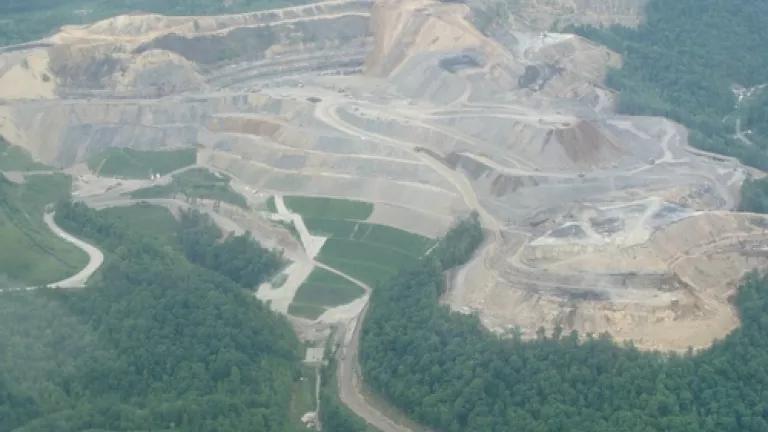
Tomorrow in Pittsburgh, as part of the Ecological Society of America’s (ESA) 95th Annual Meeting, a team of scientists will discuss the environmental impacts of mountaintop removal coal mining in the Appalachians. The organizer of the session is Dr. William H. Schlesinger, president of the Cary Institute of Ecosystem Studies and board member of NRDC.
[UPDATE: The Pittsburgh Post-Gazette covered the conference.]
“While our nation’s attention is fixed on the oil spill in the Gulf, it’s important to remember that other North American ecosystems are being assaulted by our appetite for fossil fuel," said Dr. Schlesinger. "Mountaintop mining is transforming landscapes in eastern Kentucky, West Virginia, and southern Virginia—to the detriment of forest and freshwater resources.”
The session will draw on current science to discuss what -- if anything -- can be done to ameliorate the impacts of mountaintop removal. Among the ills associated with the procedure: the destruction of diverse, old growth deciduous forests and the burying of small streams that are a vital part of the greater Appalachian watershed. To date, nearly 2,000 miles of Appalachian streams have been damaged by mining spoils. In some regions, as much as 35% of the watershed has been mined, and active mines cover 12%–15% of the landscape.
“There are no examples of successful post-mining stream restoration," according to Dr. Emily Bernhardt of Duke University. "Headwater streams are buried in mining debris. They leak dissolved solids, such as selenium, proliferating disturbance effects downstream into seemingly pristine sites. Toxic runoff can persist for decades, compromising the health of wildlife and humans.”
Topics to be discussed at the ESA session include: surface mining and regional water quality; the transport of mining pollutants to major rivers; mining patterns and downstream flood risk; the shortcomings of current stream restoration techniques; and forest fragmentation and species loss.
In addition to Schlesinger and Bernhardt, presenters will include (in order of appearance): Dr. Philip A. Townsend, University of Wisconsin-Madison; Dr. Keith N. Eshleman, University of Maryland Center for Environmental Science; Dr. Petra B. Wood, USGS Fish & Wildlife Research Unit; Joseph R. Ferrari, University of Maryland Center for Environmental Science; and Margaret A. Palmer, University of Maryland.
Palmer, Bernhardt, Schlesinger, and Eshleman were authors on a January 2010 Policy Forum paper in the journal Science, which urged the Obama administration to put an end to new mountaintop mining permits because, “permits are being issued despite the preponderance of scientific evidence that impacts are pervasive and irreversible and that mitigation cannot compensate for losses.” I blogged about this blockbuster study.
“We can no longer continue to risk the health of the environment, and by extension the health of humans, in our quest for cheap energy," said Dr. Margaret Palmer, lead author on the Science paper. "Until science shows that negative impacts of mountain top and valley fill mining can be mitigated, we need to move away from practices that result in the wholesale destruction of Appalachian ecosystems. We need to set an example for the rest of the world.”
The science is in. Out with mountaintop removal!

